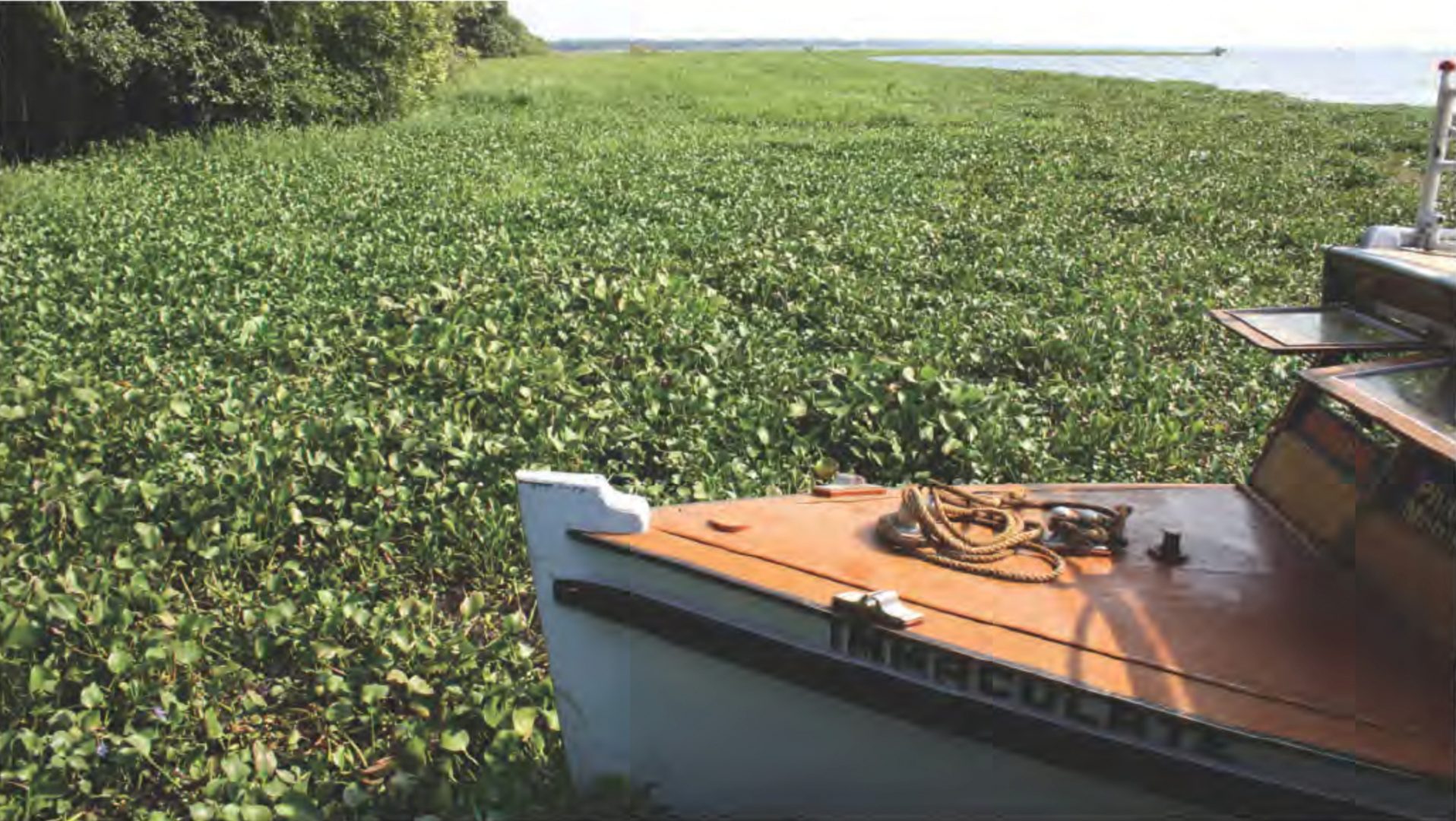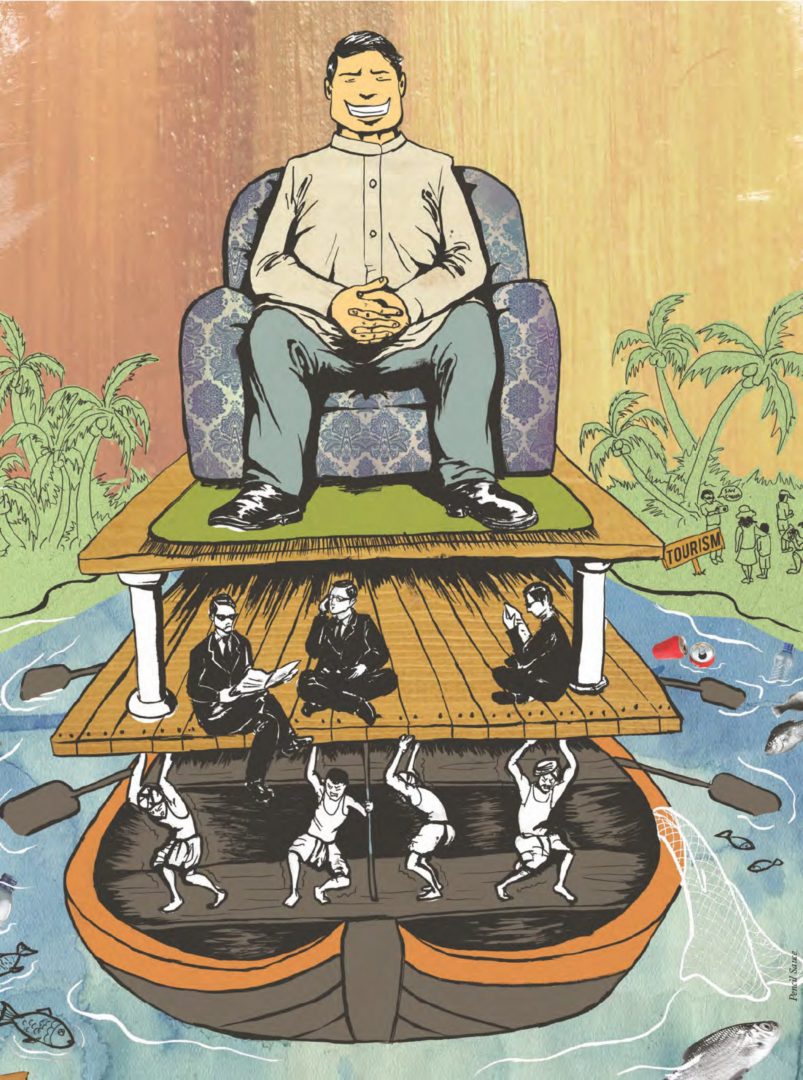Non-participatory management approaches often overlook details or are ill-prepared to make decisions concerning the health of ecosystems.
Community-based decision-making might be the more au courant approach for some cases, like Vembanad lake. Cody Patterson reports on the growing consensus among scientists and concerned communities that water quality, fish stocks and livelihoods all improve with alternative management systems.
Watching people drift down waters through gently-moving clumps of water hyacinth, along coconut palm tree-laden banks, it is hard to believe this area is undergoing drastic socio-environmental issues. Located in southwest India in the state of Kerala, Vembanad lake expands into several types of waterways, including several wetland systems and rivers. The region’s important cultural, economic and ecosystem value has increased tourism, adding pressure to the already vulnerable lake. The lake has undergone adverse effects from this growth reflected by heavy resource extraction, anthropogenic waste, agricultural runoff and reclamation of this land, reducing the size of the lake to 33%.
Fishermen, farmers, the tourism businesses and the incomes from these industries rely on the health of the lake. Fisheries have especially observed the effects of the lake’s environmental changes resulting in decreasing fish stocks. Fish in this area are a common-pool resource, and open access with no restrictions on fishing further intensities concerns of depleting this resource. A recent bill proposed by the government, the Kerala Fisheries Bill 2010, is meant to change the current patterns by regulating fishery operations, but like other top-down activities there are some oversights. Several experts recently evaluated this bill including. Bangalore-based NGO Ashoka Trust for Research in Ecology and the Environment (ATREE), which is currently working in Vembanad addressing this very issue. Their approach has taken a bottom-up participatory and joint conservation effort with the community in order to drive toward sustainability.
Shifting Power

Traditionally, conservation and management of resources in Vembanad especially fishery resources were vested in me hands of the local fishing communities. Once management shifted over 10 government hands, several adverse outcomes based on poor decisions developed. A controversial bund was constructed in 1974 to prevent saltwater intrusion on rice paddy fields, but consequently has encouraged negative feedback from the environment. The lake’s health has taken a turn for the worse resulting in a decline in primary productivity and fishery resources, growth of macrophytes, and degradation in water quality, all well documented. The want for economic growth in the state triggered a chain reaction of development, but environmental needs of the area require a suitable management plan to harmonize both. The management of (these) resources follows neither the principles of sustainability nor those of transparency and accountability.
The state has been moving toward tourism development, largely ignoring environmental problems and community dialogue. The Kerala Inland Fishery Bill reflected government progress recognizing the lake’s need for a stronger regulatory framework, but still remains incomprehensive. Even the title reflects the lack of detail, ‘Kerala Inland Fishery Bill’ needs adjustment to ‘Fisheries’. The act does not take into account pollution, the bund, and in turn reflects bureaucratic supremacy. In order for patterns to change, community Involvement in decision making and planning is advised. People in the area have traditional knowledge that is applicable to how the environment works and what is needed to sustain it.

Whether people are able to self-organize and manage common property resources depends on the broader social setting within which they work. National governments can help or hinder local self-organization. The fishermen in this community rely on the government for some forms of support in order to manage their resource. In one case, the government failed to execute the agreed removal of a rapidly growing plant, the water hyacinth, malting it troublesome for fishermen to do their job. When communities acquire the opportunity to control their resources, a bottom-up management approach can work, if done in a way congruent with environmental needs. Stakeholders, in this case are burdened by this management obstacle, and are unable to determine appropriate mechanisms towards a solution. Therefore, it is essential for stakeholders to have the power to execute decisions based on socio-environmental needs of the community.
Moving toward a solution
A designated Ramsar site since 2002, the lake is now under conservation surveillance by multiple organizations. ATREE recognizes community stakeholders, organizations and panchayats in order to determine socially just environmental conservation. One of the first lessons learned echoed past problems with top-down management. Now the NGO is trying a new approach that distinctly employs bottom-up decision-making through a deliberative democratic method. With community participation in bottom-up management of fishing, the area has already seen a rise in fish stocks through an artificially created fish sanctuary, using branches of cashew and bamboo poles, known as Matsyatavalam (Home of Fishes). A community-based organization for these activities was constituted (Community Environmental Resource Center, CERC) which addressed the declining fish stock by encouraging stakeholder involvement in decisions directly connected to livelihoods here, leading to designated fish sanctuaries.
Communication between fishermen, other stakeholders and researchers helped rouse the opportunity to create a solution to maintaining fish habitats for spawning. Two-way conversation enabled both parties to gain knowledge and enabled a community to revive a resource.






